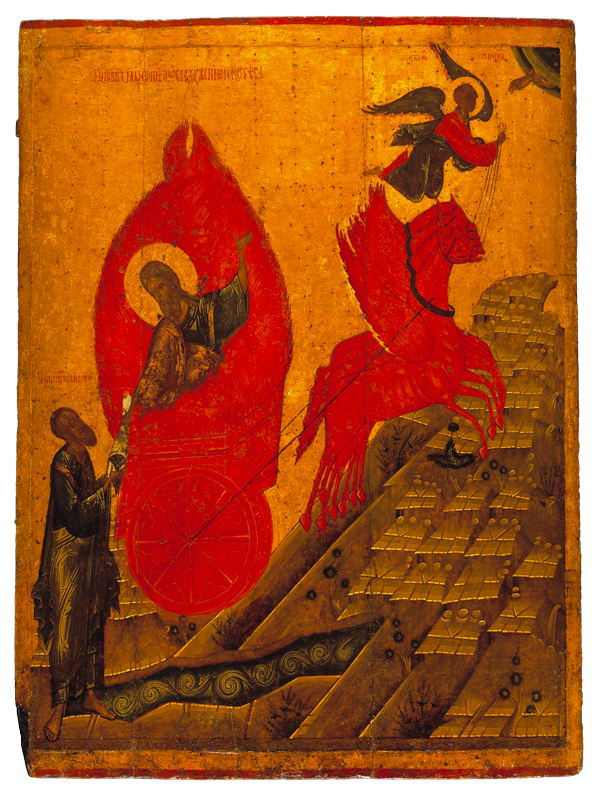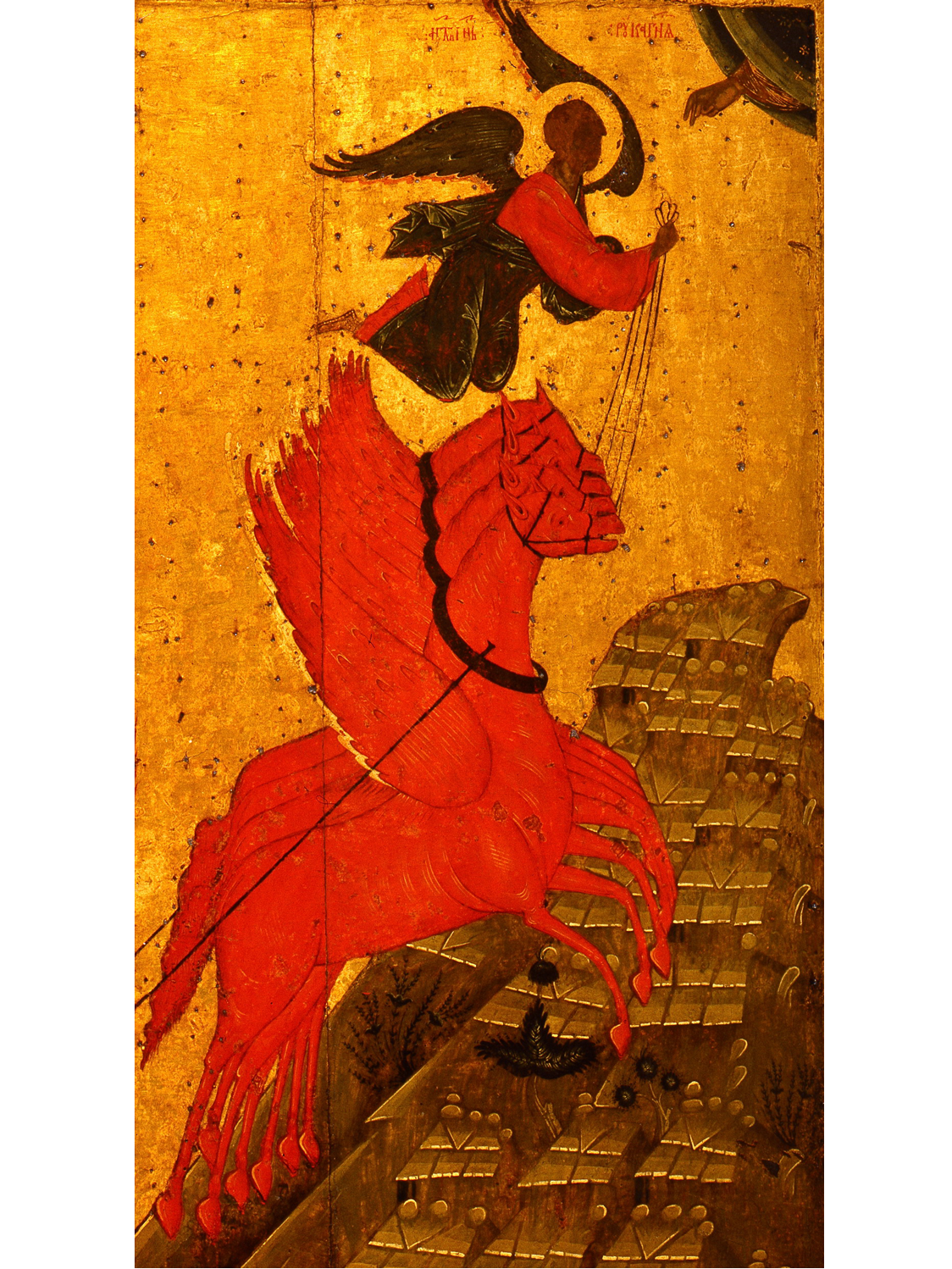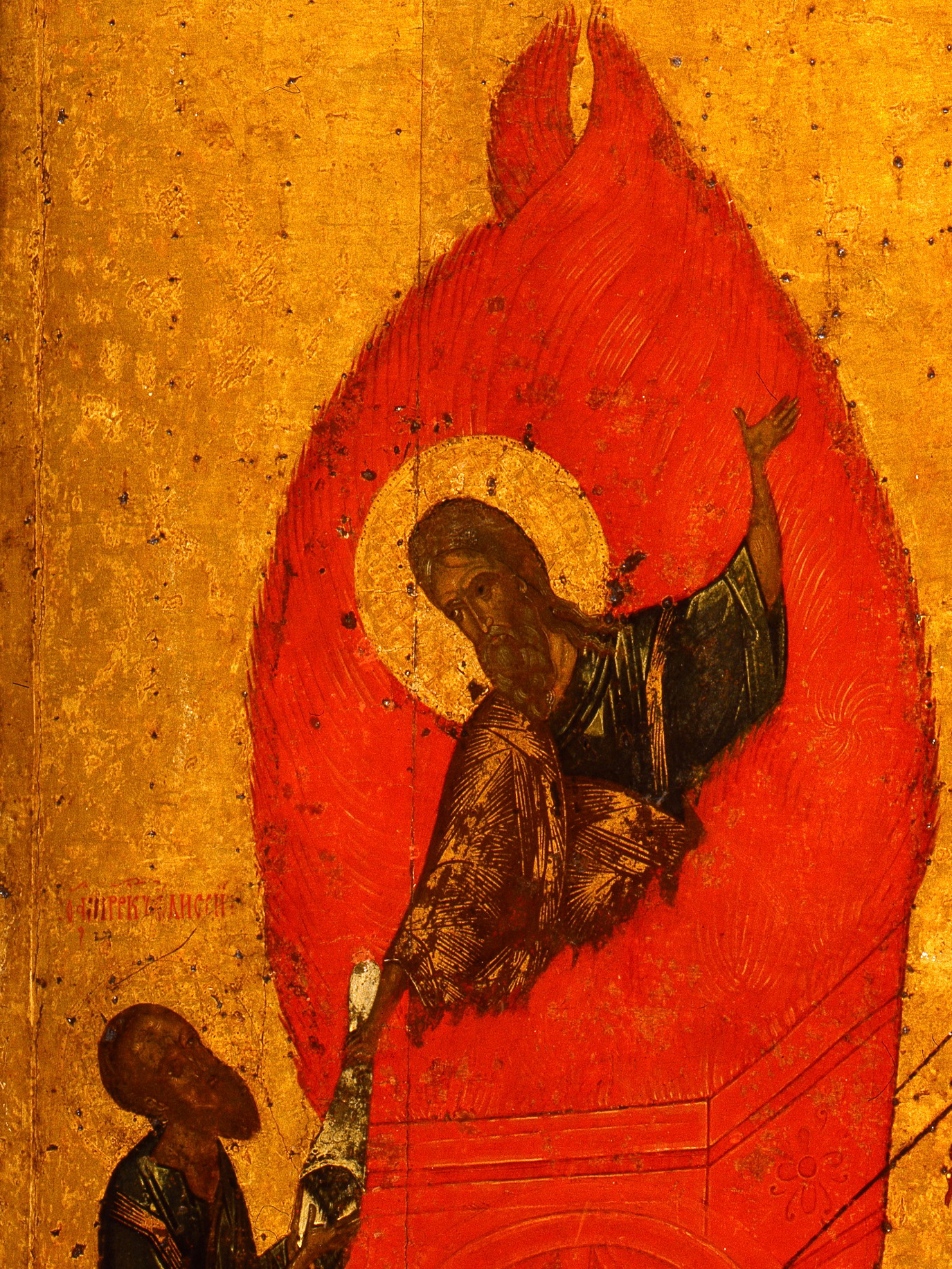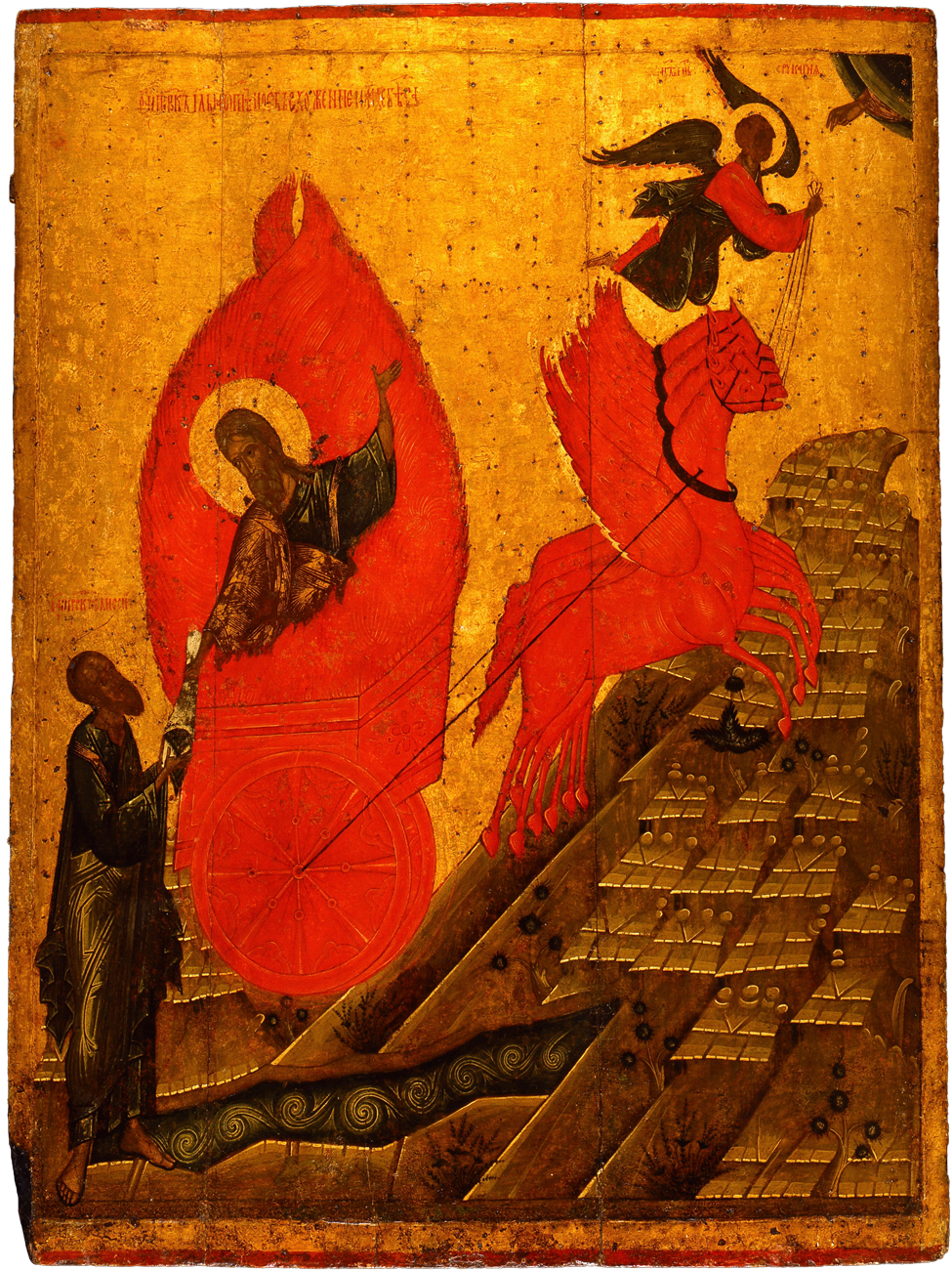Icon. Fiery Ascension of the Prophet Elijah




The Pskovian school of icon painting is a distinctive branch of the ancient Russian icon painting tradition. Its origins go back to the XIII – the beginning of the XIV century, when Pskov gained political independence. "Fiery Ascension of the Prophet Elijah" can be attributed to the prosperity of Pskovian painting.
The prophet Elijah is an ascetic and righteous, the accuser of idolaters ascended to heaven in a fiery chariot alive. He donated his clothes – melote – to the successor and disciple, Elisha, as a symbol of the prophetic gift. “The Fiery Ascension of the Prophet Elijah” is one of the most popular scenes of the prophet’s life, widely spread in icon painting of the end of the XV century, primarily in Novgorod and in the Russian North. The peculiarity of the composition is the red halo surrounding the ascending chariot.
The artifact comes from the church of Ilya Ilyinsky nunnery (first mentioned in 1585–1587). After the abolition of the monastery and the church in 1787, the image was transferred to the nearby cathedral of John the Baptist nunnery, the burial place of Pskov princesses, where it stood "on the tomb of Princess Natalia," the wife of Prince Dovmont and son of Prince Dovmont –Timothy.
The icon "Fiery Ascension of the Prophet Elijah" can be attributed to the prosperity of the Pskovian school of icon painting – the original branch of the old Russian icon painting tradition. Its origins go back to the XIII – the beginning of the XIV century, when Pskov gained political independence. “The fiery ascent of the prophet Elijah” is one of the most popular scenes of prophet’s life, widely spread in icon painting from the end of the 15th century, primarily in Novgorod and in the Russian North.
The iconographic plot of the “Ascension of the Prophet Elijah” is based on the biblical text of the IV Book of the Kings, which tells about the last conversation of the Prophet Elijah with his disciple Elisha, his ascension alive (in the flesh) to heaven in a chariot of fire and the transfer of melote to Elisha (outerwear, mantle, cloak) as a symbol of the prophetic gift. According to St. John Chrysostom’s interpretation, Elisha’s acceptance of the miraculous cape is a type of the Eucharist (the most important part of Christian worship is the liturgy, during which the sacrament of communion is performed).
The composition of the “Fiery Ascension” is composed in the early Christian period and corresponds with the prototype of “Ascension” and the coming salvation of the human race. In ancient Russian artifacts, the fiery vortex movement became a compositional axis and gave rise to many variants of artistic solution. A unique feature of this icon is the pillar of fire that gripped the figure of the prophet Elijah, which emphasizes the moment of giving grace to the human race.
It is known that the artifact came from the monastery complex of the Church of Ilya from the Ilinsky nunnery (first mentioned by 1585–1587). After the abolition of the monastery and the church in 1787, the image was transferred to the nearby cathedral of the St. John the Baptist nunnery, which was the burial place of the Pskov princesses, where it stood "on the tomb of Princess Natalia," the wife of Prince Dovmont and son of Prince Dovmont – Timothy.



